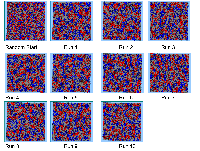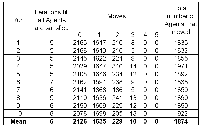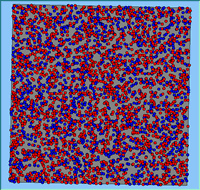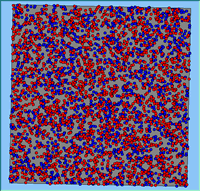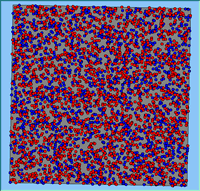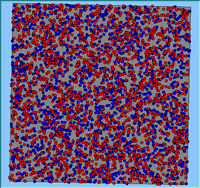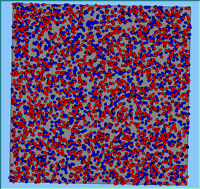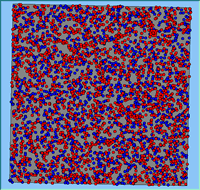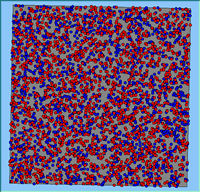The Segregation Model | Variations on the Basic Segregation Model | Multiple Model Runs
- Source Code (729 KB)
- Shapefile (4.06 KB)
As with the more traditional-cell based Schelling-like models, segregation emerges but the precise pattern varies each time the simulation is run. However, unlike the cell-based models, this is a vector-based model which does not use any cells. Therefore agents movement is not restricted to an empty cell and agents are free to move anywhere within the area, even if there is an agent already located there. Figure 1 highlights the final pattern of segregation when all agents are satisfied with their neighbourhood for different model runs. Animations of these simulation runs can be seen below. Due to the fact that the model is probabilistic, different model runs take different amounts of time until all agents are satisfied with their neighbourhood configurations as highlighted in Table 1. In some instances, the total number of agents that are dissatisfied between time steps grew as agents moved around the environment. This is one of the central tenets of the Schelling model. Whereby a group of individuals can be perfectly satisfied in a neighbourhood, unexpectedly an agent arrives and destroys this balance. The newcomer may tip the balance – neighbourhood tipping – so the agents who were previously content now decide to move. In turn, their moves may disrupt settled neighbourhoods elsewhere. And so the effects percolate through the system. This can be seen in the number of times the agents moves. If an agent is dissatisfied with its current location, it will only move to an area where it is satisfied. Therefore if the neighbourhood changes and the agent becomes dissatisfied, it will then decide to move again. This can be seen in the summary statistics from the simulation runs where certain agents move multiple times during the course of a simulation run while others do not move at all (Table 1).
Figure 1: The resulting spatial pattern of segregation for 10 different model runs.
Table 1: Comparison of different runs. The number of iterations until all agents are satisfied with their neighbourhood and the number of times different agents moved.
Animations of simulation runs
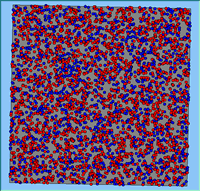 |
||
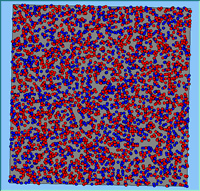 |
||

